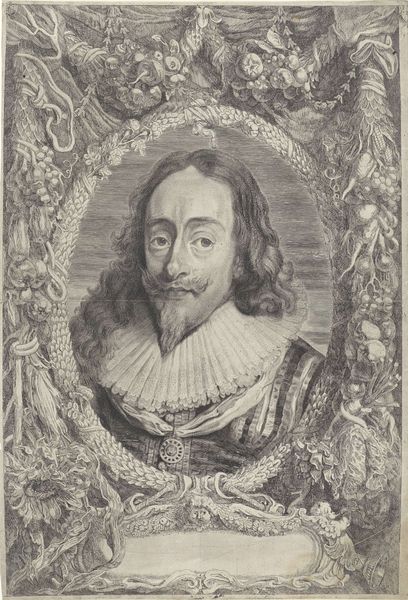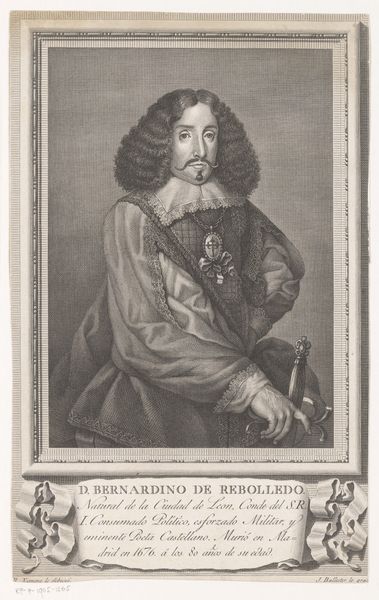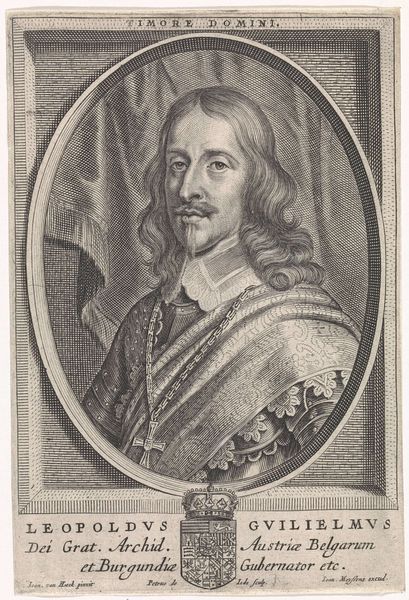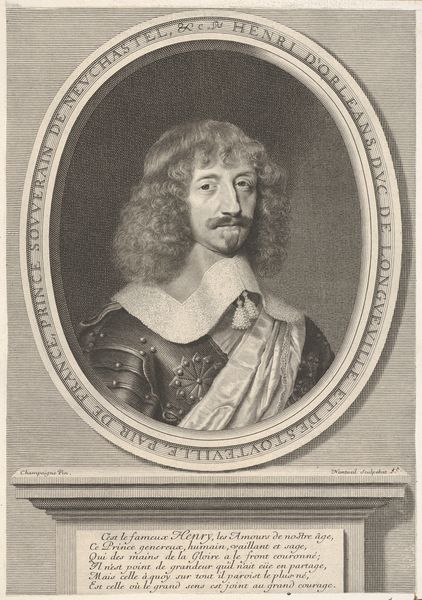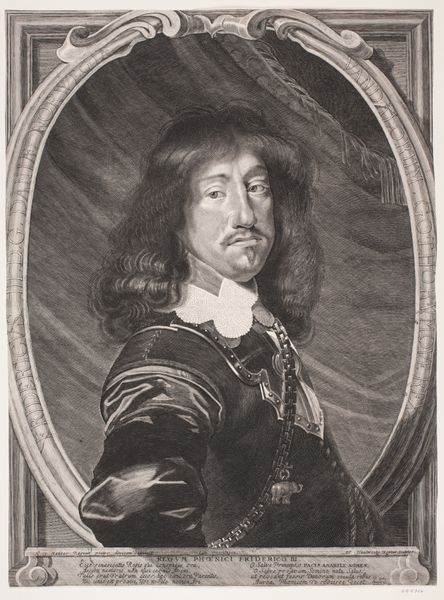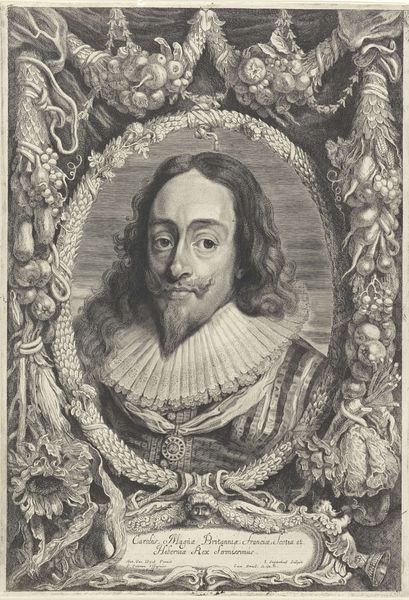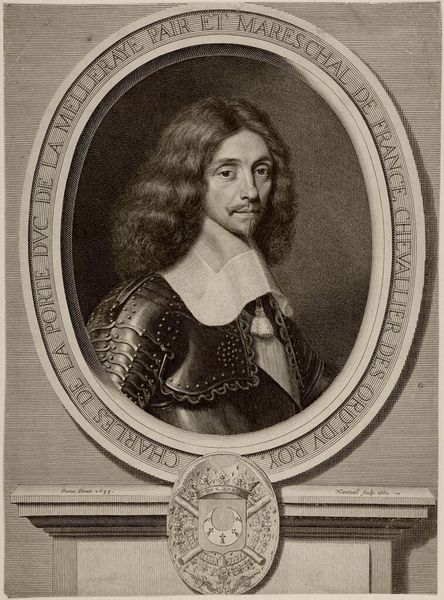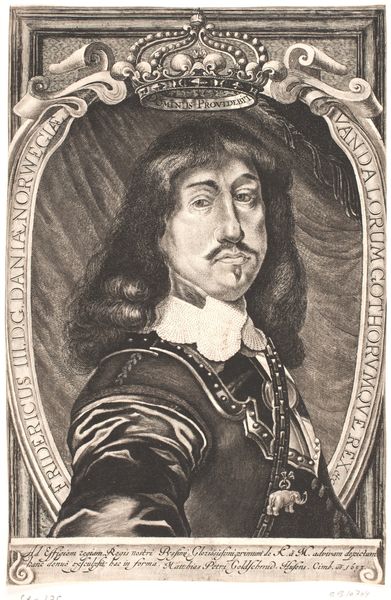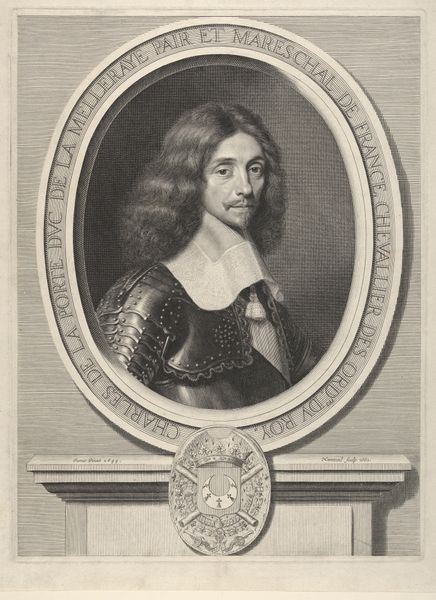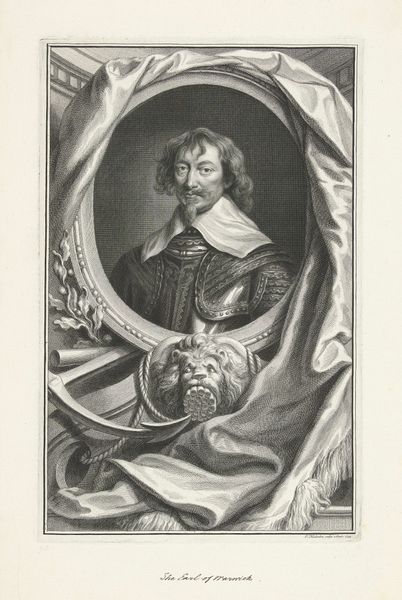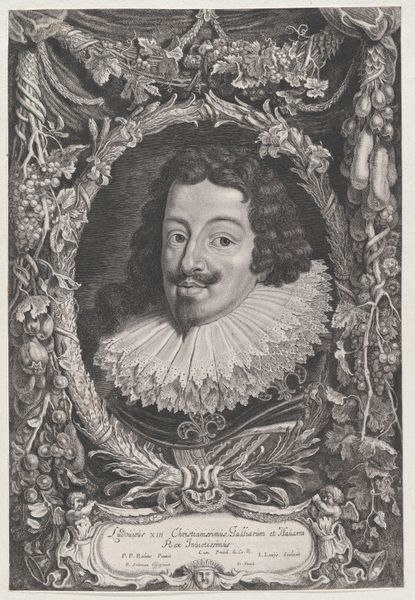
Copyright: Public Domain: Artvee
Curator: Standing before us is a striking oil on canvas portrait believed to be rendered after Anthony van Dyck’s original depictions of Charles I, sometime after 17. The subject exudes a distinct, almost melancholy grandeur. Editor: Yes, there’s an undeniable air of…resignation. It's quite remarkable, actually. Given the historical context of Charles I's reign, it’s tempting to read his slightly downturned mouth as a premonition of the turmoil to come: the English Civil War and, ultimately, his execution. How interesting. Curator: Symbolically, his attire is fascinating. It’s extravagant—a red and silver doublet with touches of blue that demand attention. And what is this gesture he makes with his left hand? The composition of his clothing could be referencing ideas of a new renaissance. Editor: Exactly! Power through appearance, but also vulnerability in pose. The slight gesture is calculated. Charles seeks something from the viewer, perhaps understanding or acceptance of his reign. Also consider the Lace—a material which in history could be seen worn or seen by men was always a mark of sophistication. The setting includes an imposing landscape: Is the wild environment foreshadowing the instability he will encounter with the social constraints of London? Curator: And note the backdrop of tumultuous skies meeting an open landscape, a symbolic landscape we find across Europe, and this offers quite the commentary on Charles' state of mind at this moment, I'm not certain though of an explicit message here. I am only certain, in context, about the color choices. Editor: I think there’s certainly tension between the symbolism of nature and culture represented here. Charles tries to have a calm stature with the world but the context is a looming landscape of chaos. The dark backdrop could highlight his social location versus a world that’s already chaotic. The history is interesting. The symbols he is adopting in his clothing would have communicated stability and hope through his position. I do also notice there appears to be a gilded crown off to the far left of the artwork, which in theory feels like Charles might be stepping away or not completely in view with his rule. A silent cry for a lack of desire maybe? Curator: I think looking at the artwork now, it also reveals more layers when we think of how Charles would have wished for society to look at his position versus its actuality. Very profound. Editor: Agreed! This opens some fascinating discussions to explore with a younger crowd. Hopefully sparking awareness and insight into intersectional stories, not only history.
Comments
No comments
Be the first to comment and join the conversation on the ultimate creative platform.
